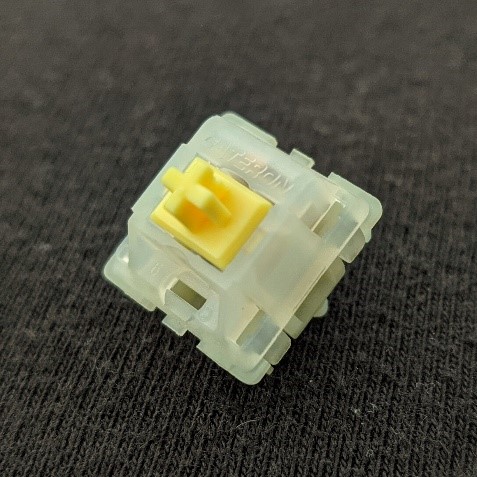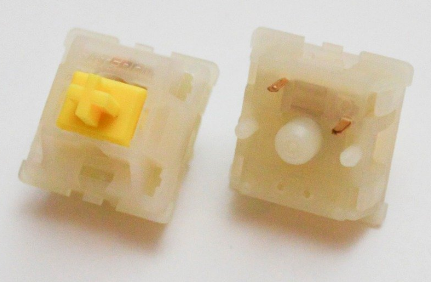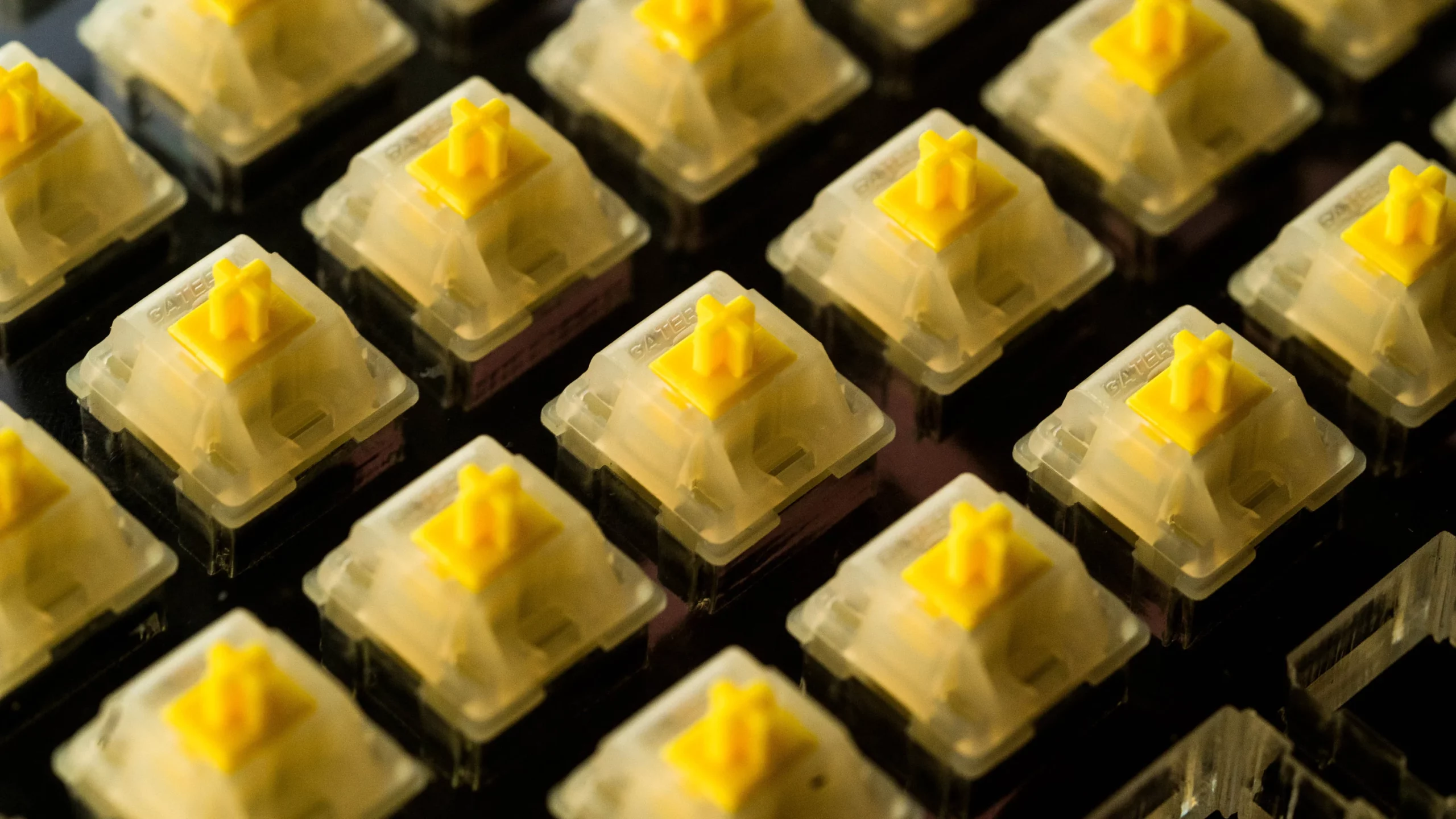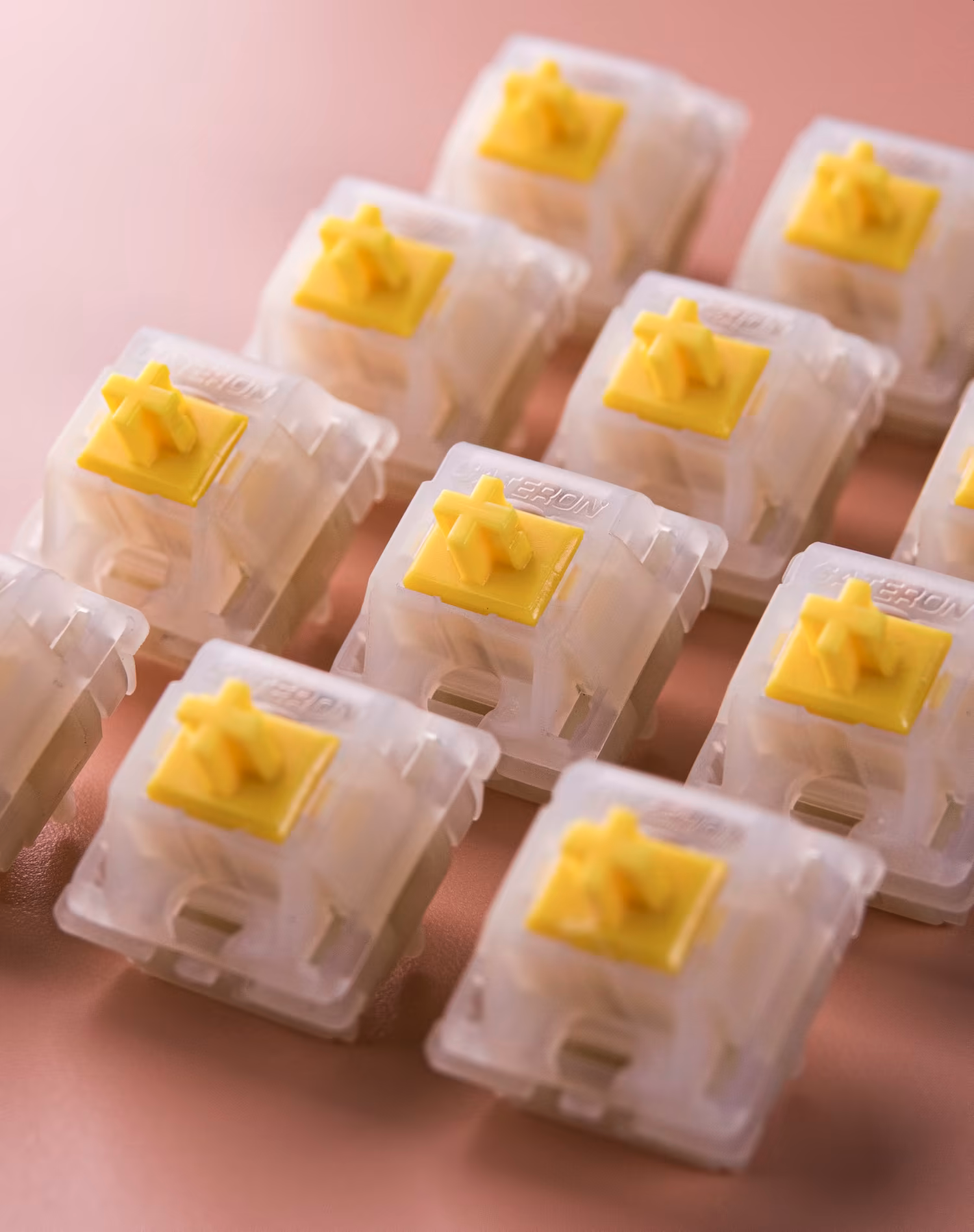Gateron Milky Yellow
Retail Price
$0.233
Lowest Price
$19.99
Release Date
2014
The Gateron Milky Yellow switches are not the best switch in the world, but they are plentiful, always in stock, cheap, have nice springs, and sound and feel nice when lubed, especially in bottom out. The milky top and bottom yellows sound smoother and quieter than the normal Yellows due to the softer nylon housings, and they have a deeper sound, so it’s best partnered with a board that can take advantage of it. Overall, it’s a good switch.
Purchase Links
Overview
- Budget-Friendly
- Performance
- Linear Switch Variant
- Conclusion
- Positive
- Negative

Glarses

KeebNews
Build & Design
- Bottoms
- RGB
- Spring
- Variants
- Positive
- Negative

r/MechanicalKeyboards

r/MechanicalKeyboards

ThereminGoat's Switches

r/MechanicalKeyboards
Performance
- Actuation
- Bottom Out
- Feel
- Performance
- Pressing
- Resistance
- Sound
- Sound - Bottom Out
- Sound - Scratch
- Sound - Upstroke Return
- Spring Ping
- Wobble - Stem
- Wobble - Top Housing
- Positive
- Negative

KeebNews

ThereminGoat's Switches

ThereminGoat's Switches

Glarses

r/MechanicalKeyboards

KeebNews

Glarses

r/MechanicalKeyboards

KeebNews

ThereminGoat's Switches

ThereminGoat's Switches

ThereminGoat's Switches

ThereminGoat's Switches

ThereminGoat's Switches

ThereminGoat's Switches
Comparison
- Comparison vs Yellow
- Positive
- Negative
Availability & Price
- Availability & Price
- Price
- Value
- Positive
- Negative

ThereminGoat's Switches

r/MechanicalKeyboards
Miscellaneous
- Gateron Yellow Switches
- Staple
- Positive
- Negative

ThereminGoat's Switches

ThereminGoat's Switches







Comments